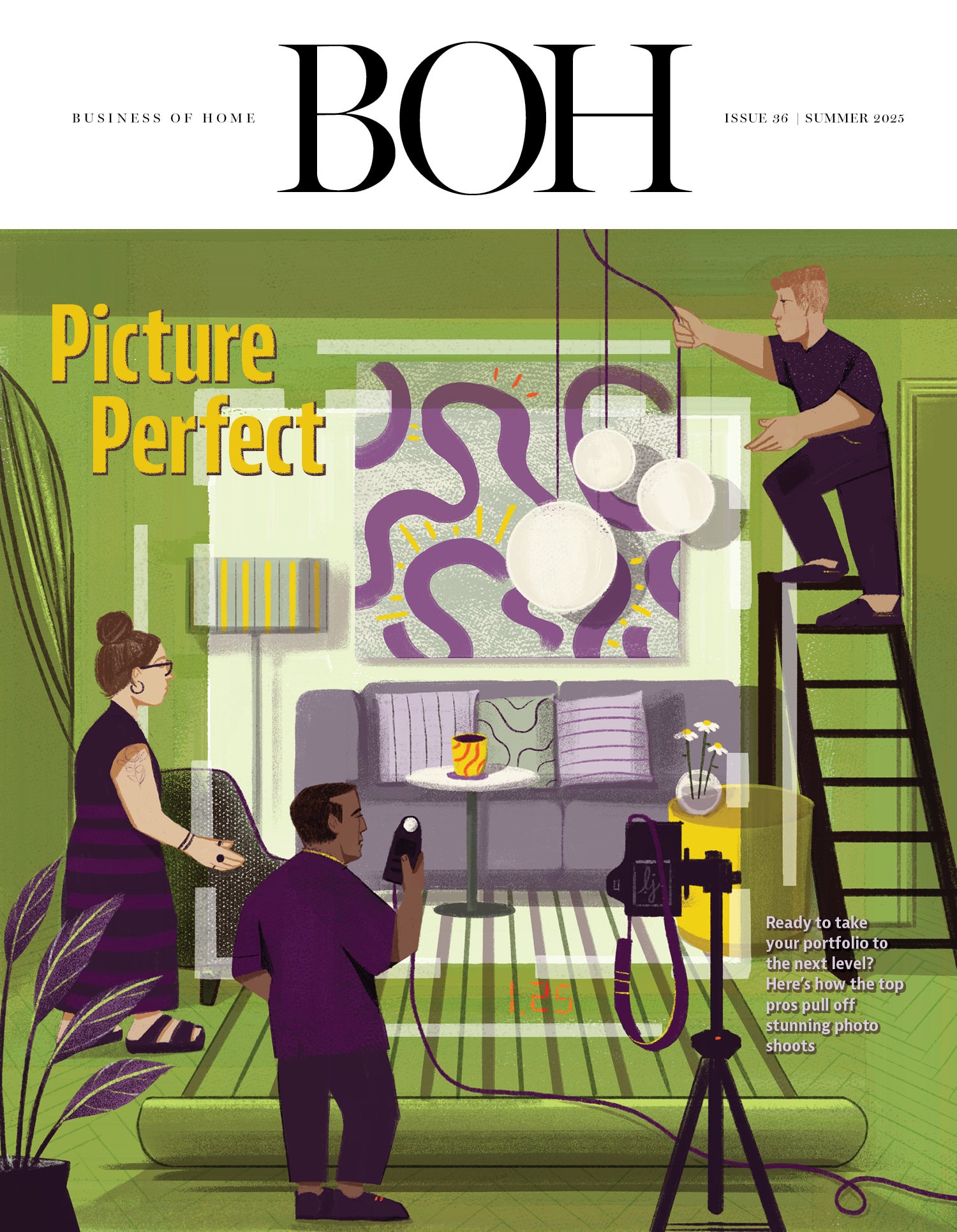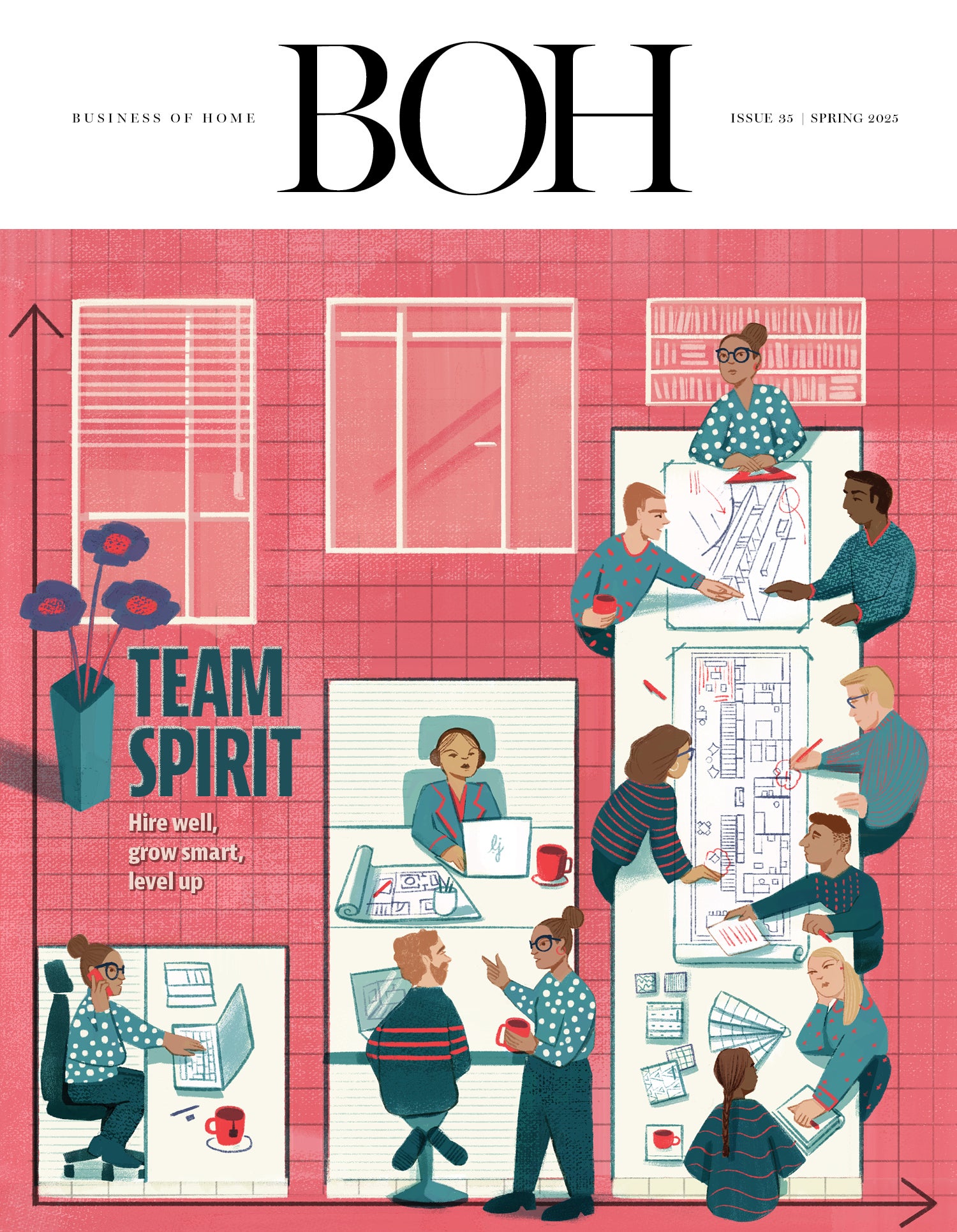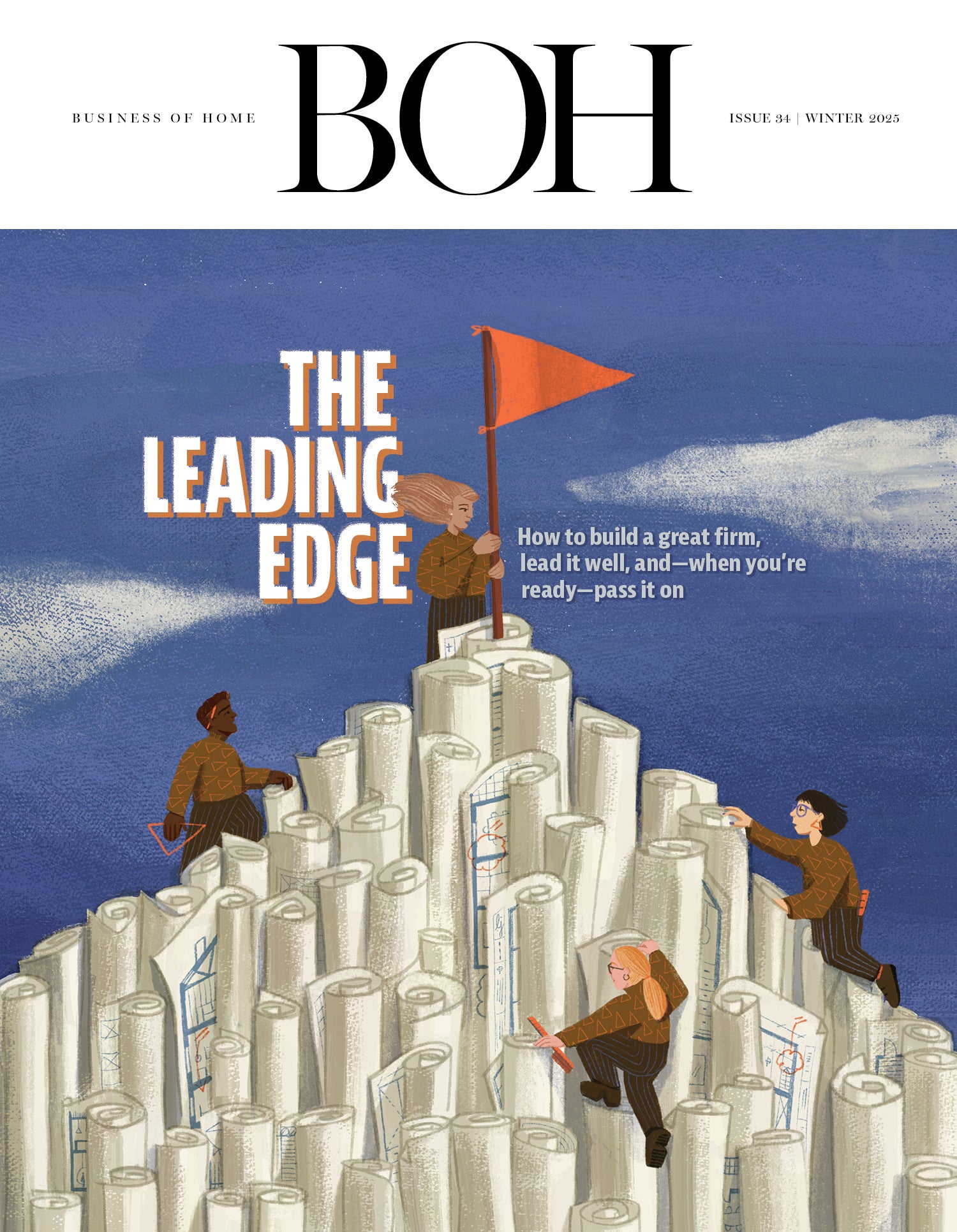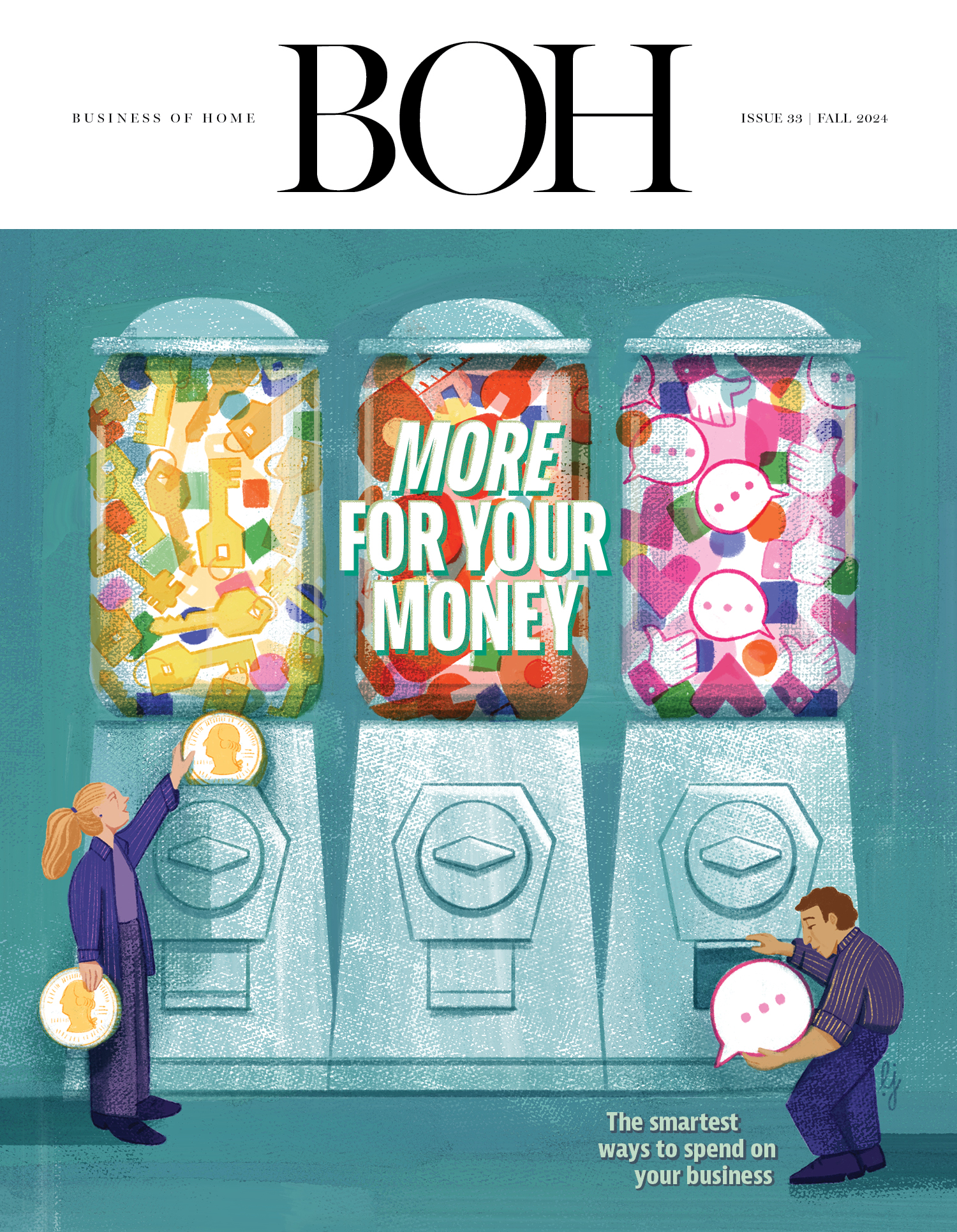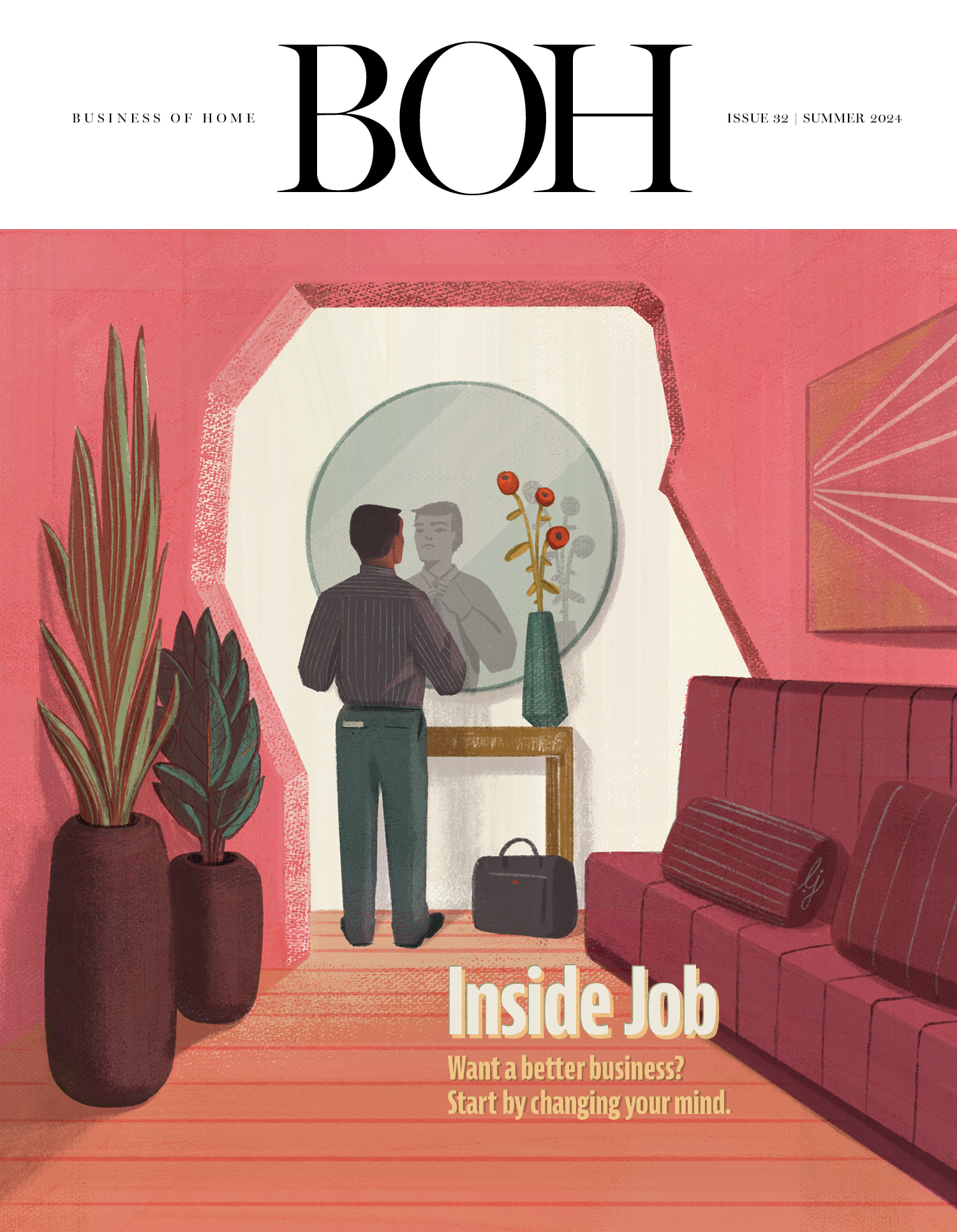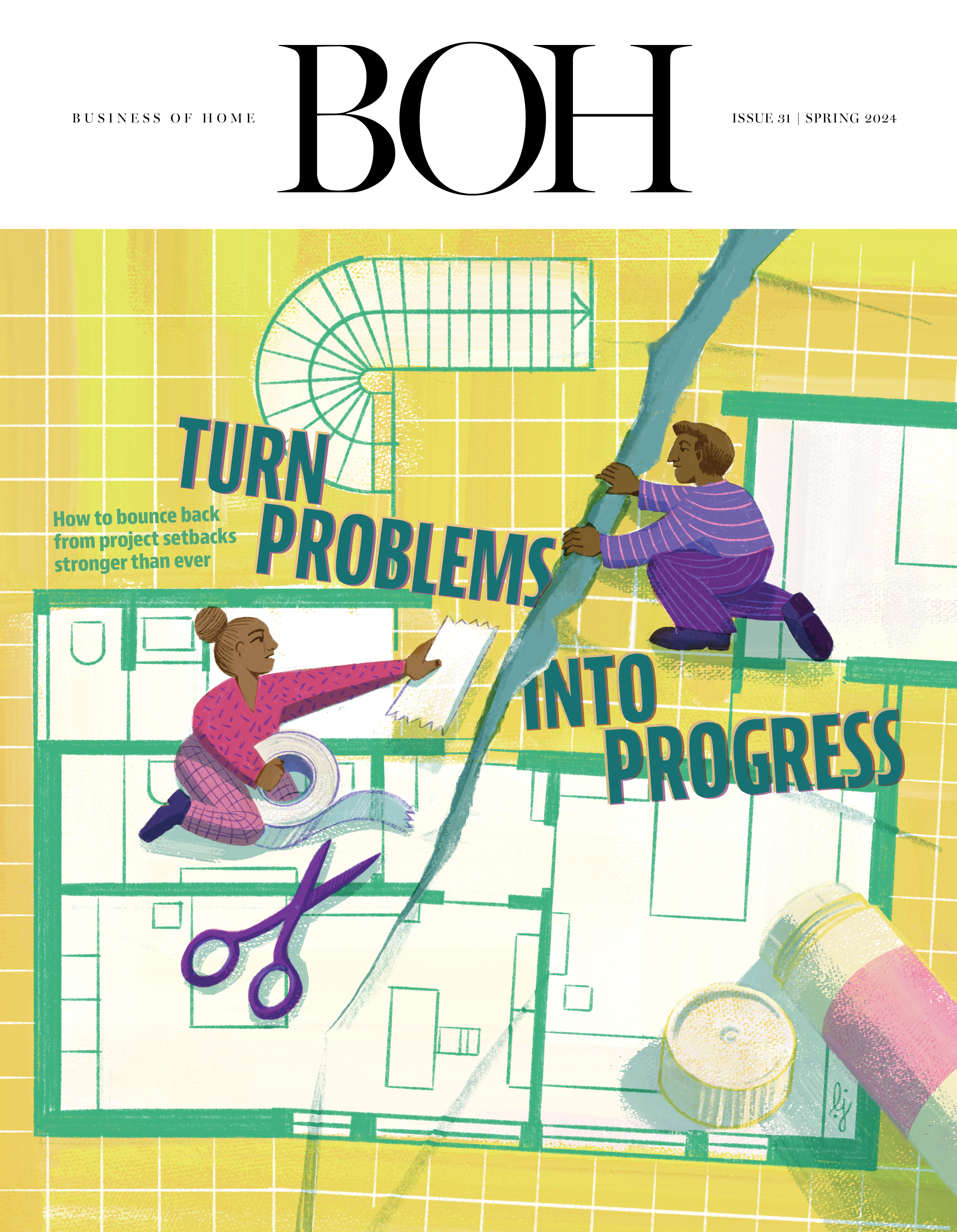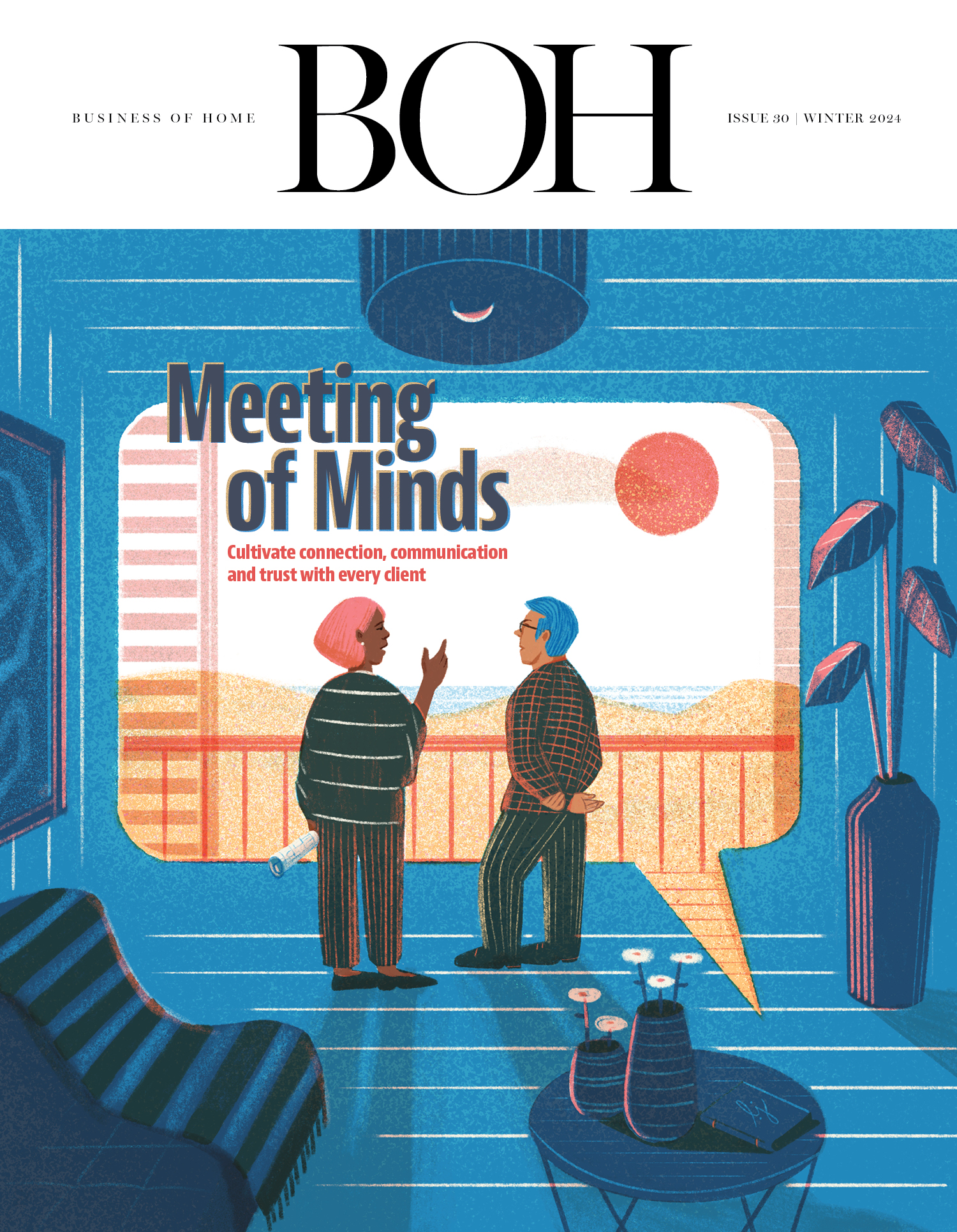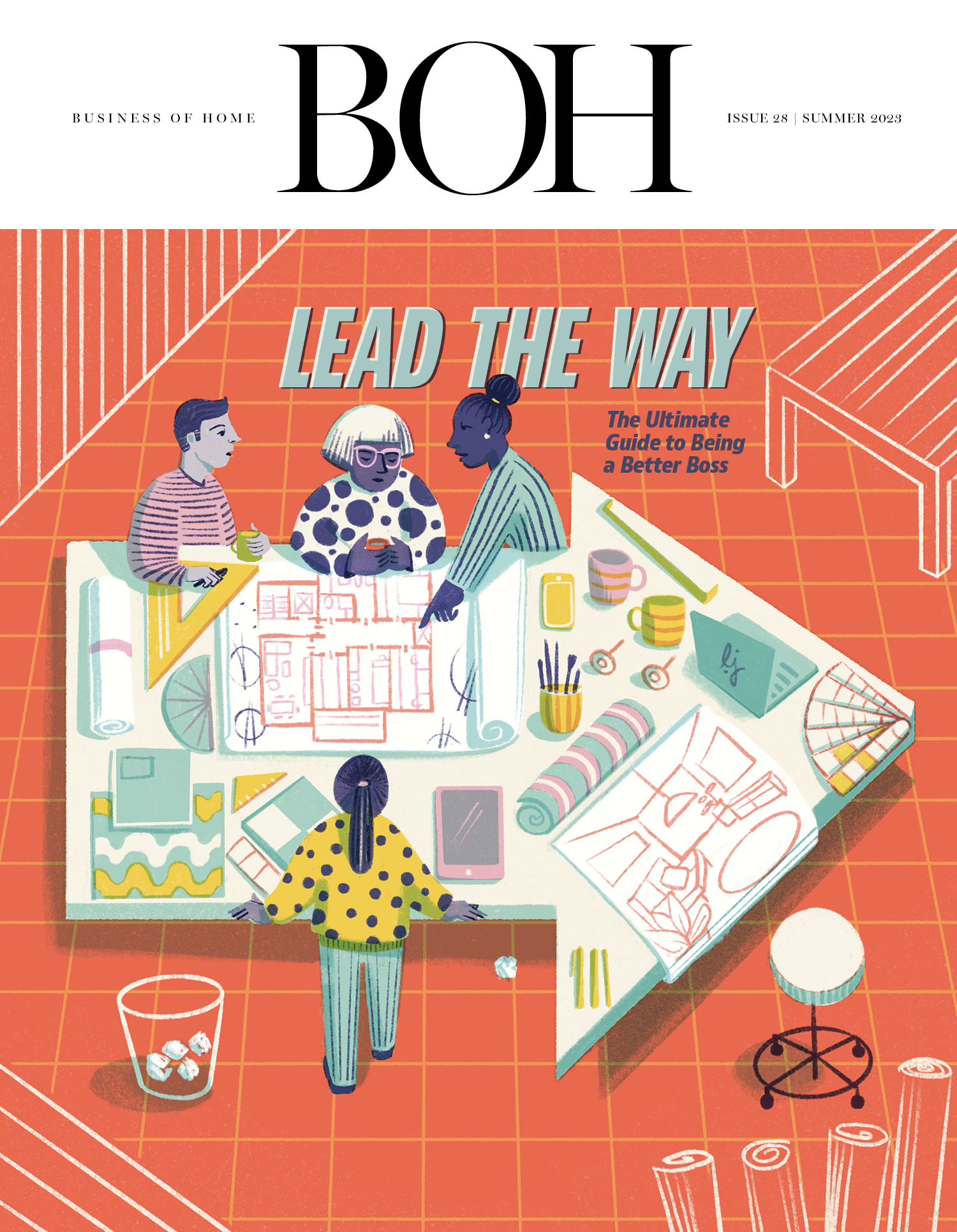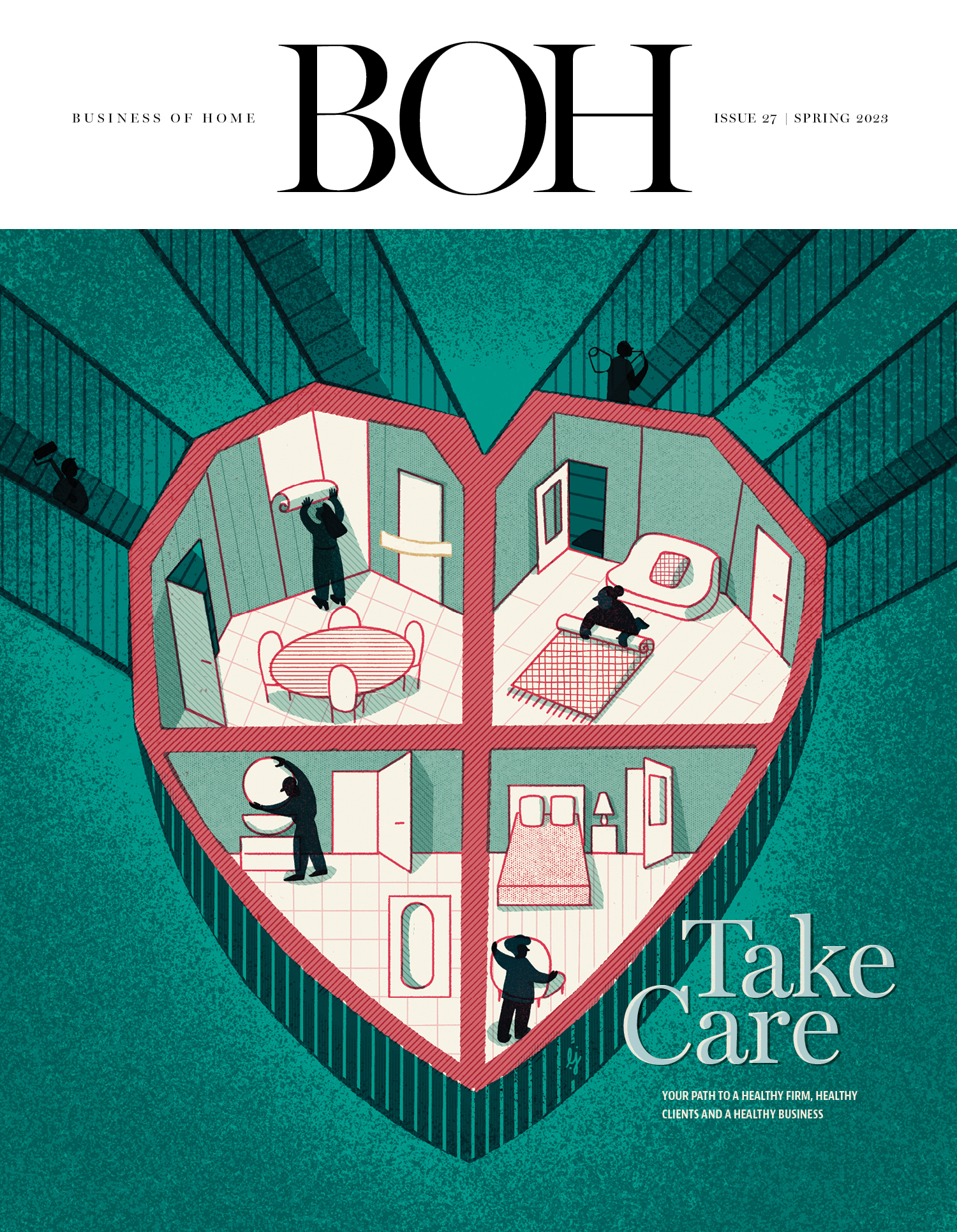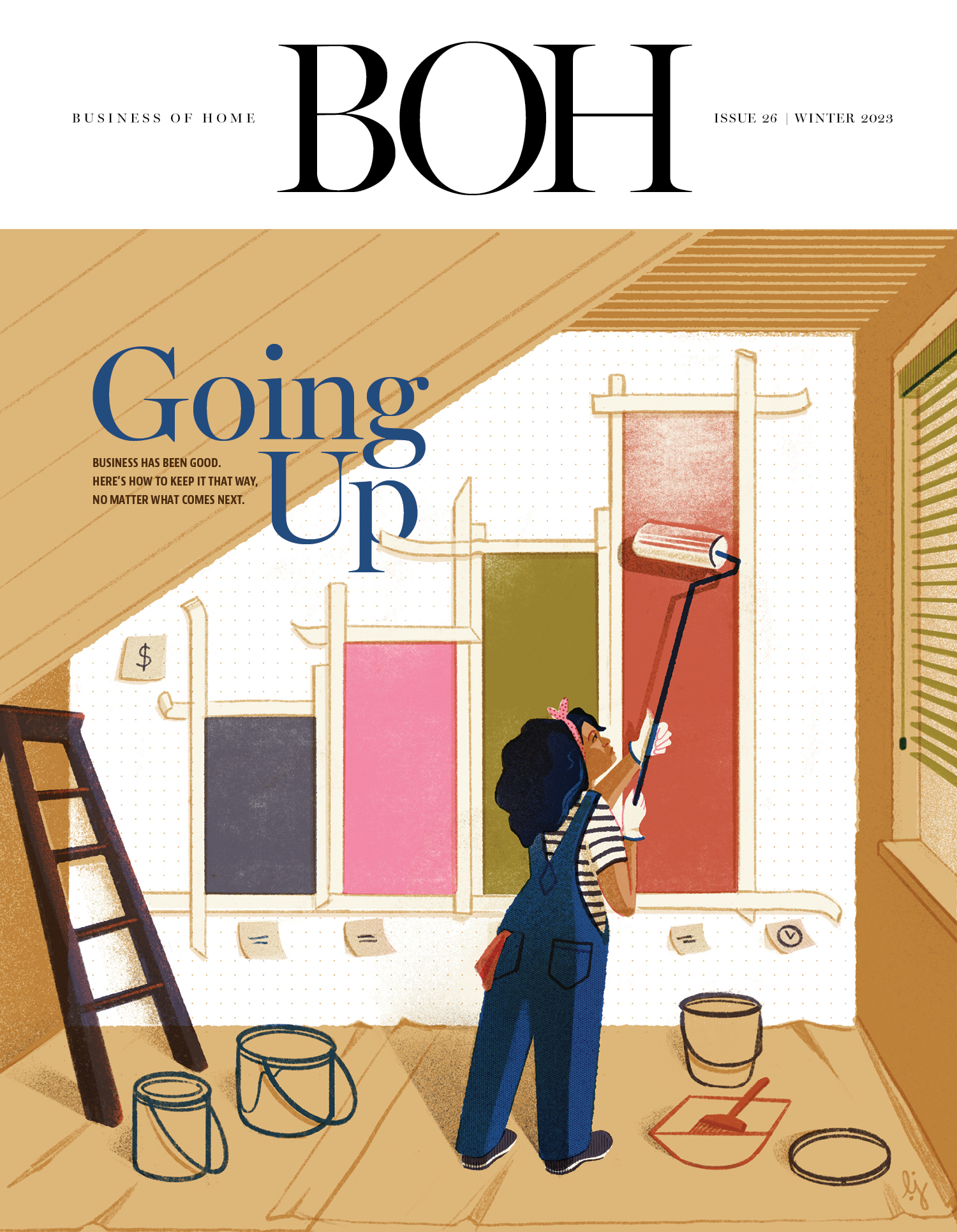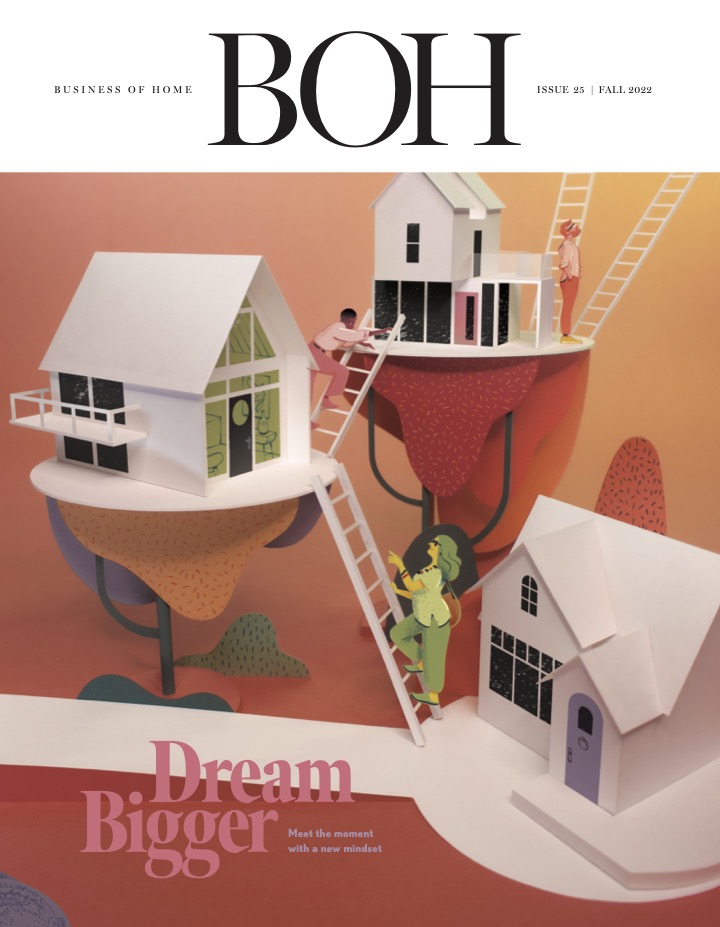In Business of Home’s series Shop Talk, we chat with owners of home furnishings stores across the country to hear about their hard-won lessons and challenges, big and small. This week, we spoke with Dina Litt of the Litt Concept House in Sherman Oaks, California.
Could Litt have married into a more perfect family? The longtime lover of retail and design was working in advertising and running a side hustle creating events based around “commerce and connection” before she and her husband, Kevin, took over his parents’ five-decade-old antiques business. “My husband has been in the business since he was 3. He’s been antiquing all over the world—or ‘dragged around,’ as we joke,” she says. Kevin went into furniture design himself before diving into the family business; more than a decade later, the couple bought out the store. The pandemic hit soon after, which necessitated rolling out some of the updates they’d had in mind—like bringing the inventory online and launching e-commerce—much sooner than they’d anticipated.
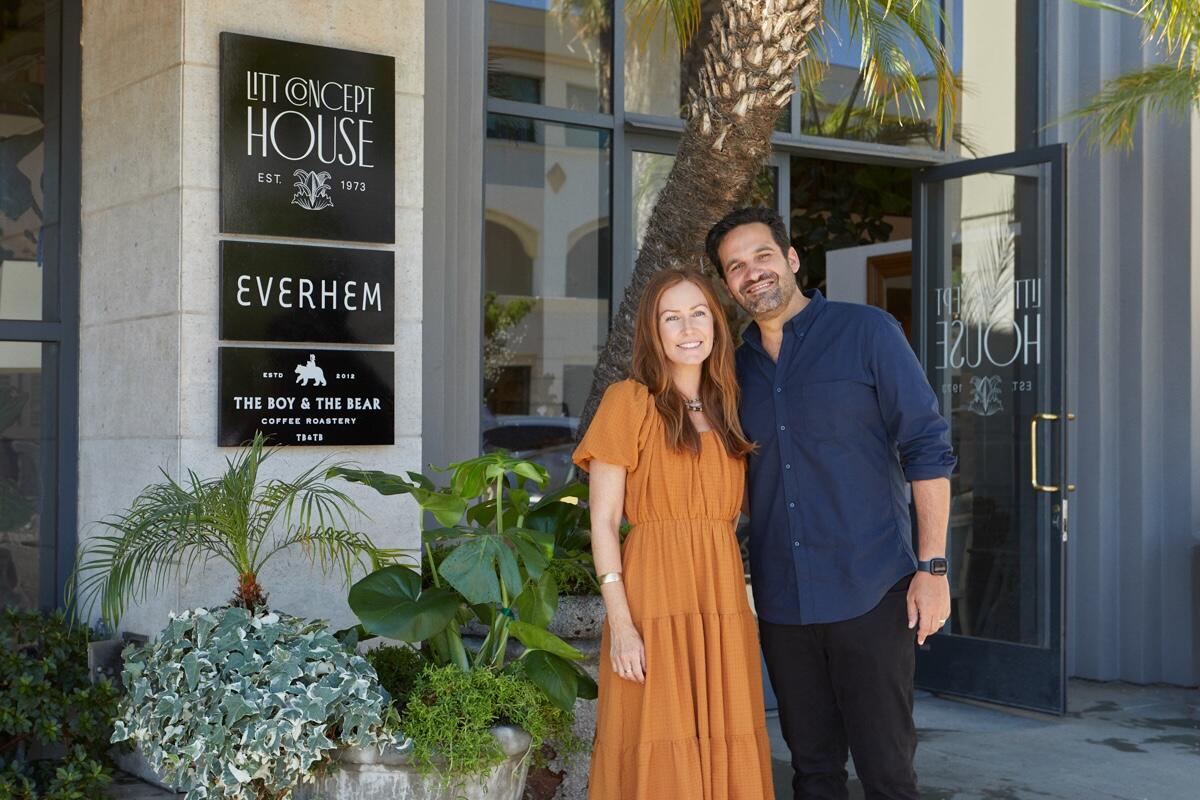
Five years later, Litt is taking a breath and reflecting on why taking over the business wasn’t a breeze as the couple had anticipated given their respective backgrounds. Ahead, she chats about the challenges of financing inventory upfront, why she’s generally underwhelmed by the current furniture market, and how coffee is a vehicle to get younger people to buy antiques.
What was your background before you met your husband, and how quickly did you become involved with the business?
When I was in high school, I wanted to be an architect. I love design. That was always a passion. I spent 20 years in advertising and partnerships, but [before that], I also spent 10 years working in retail at Fred Segal in Santa Monica. That was the OG retail experience! I held on to that, and as retail has been failing all over, I was like: We can bring this back, and we can do something interesting.
When I was working in advertising, I started my own business around commerce and connection. It was a Goop-type thing, with talks and shopping, and I was doing that for four years when Covid hit. I closed that business, because in-person events were obviously not going to be a thing, and leaned right into developing Litt Concept House.
On July 23, national sales training and business development expert Alison Mullins guides you through the process of visualizing your dream design client—and using data you already have to attract more of them. Click here to learn more and remember, workshops are free for BOH Insiders.
We’re in Sherman Oaks, which is a beautiful, super affluent neighborhood in the Valley. It’s a neighborhood where people from the city who [could] no longer afford the multimillion-dollar houses [once] moved, and now it’s full of $3 million to $15 million houses. The whole real estate market in L.A. is crazy. There’s nothing shabby about the Valley, as L.A. has grown. So we had an opportunity: The neighborhood needs it! We developed the space with a coffee shop, a beautiful gift shop, and then our thousands of antiques fill the remaining 20,000 square feet. We have another tenant, Everhem, which does beautiful window treatments. I joke we took the ’90s out of the store. It had green carpet, if you can imagine it. Renovating a 20,000-square-foot space—it’s a lot. We ended up bootstrapping, and we reopened in February 2021. The brand is all about “bringing the one-of-a-kind home.” I would say maybe 70 percent of what we do is antiques. We handpick everything, from all over the world, focusing on France, England, Belgium, the Netherlands. We go and source six to eight containers a year. We have an upholstery line as well, and deliver made-to-order sofas. It’s become a pretty great operation that I’m really proud of.
Because you bought out the business, did that include the vendor list? What was it like to transfer those relationships?
We did buy some of the inventory that my in-laws had. Keep in mind, my husband had been with them on and off forever, but physically for the last 15 years. So we had actually had a lot of relationships overseas. We don’t go to London or Paris to buy; we don’t buy in the big flea markets. We buy as direct as possible. We walk into a few places—whether it’s a store in Sussex down a beaten path, or a farmhouse with a guy who buys directly from the castles and chateaux and mansions—and a guy will go, “Don’t tell me that’s Mitchell Litt’s son!” When I tell you it runs deep, it runs really deep. We could not do this without his parents’ roots, and my husband being in business with them for the last 15 years.
Are you still looking for new vendors, either to go with trends or just because you realized something’s missing?
Yes, we are adding new vendors. I like to say that we’re on trend; we’re not trend-y. We always want to know what’s going on. Honestly, we’re not reinventing design, being in this space. Everything has kind of been done, but it’s a new take on it. That big fuzzy chair that’s been going on for five years? Someone will come in and say, “I still love this chair,” and we say, “OK, let’s make a take on that.” We design and manufacture one-offs.
We are constantly researching. I’m very underwhelmed with what is out there [at the furniture and gift markets], to be honest with you. There are two brands I am loving right now: We’re bringing in Wesley Hall, which I’m very excited about. That is a North Carolina brand, and we’re doing a whole upholstery line with them. It will allow our customers to do highly customized, beautiful pieces made to order—like eight different arms, and you can pick and choose, but we can guarantee the quality, and the price point won’t be insane. It will be luxe, but not out of the park. I love what Four Hands is doing. Theodore Alexander has stunning pieces that we rotate. I’m definitely open, but value and quality is the start.
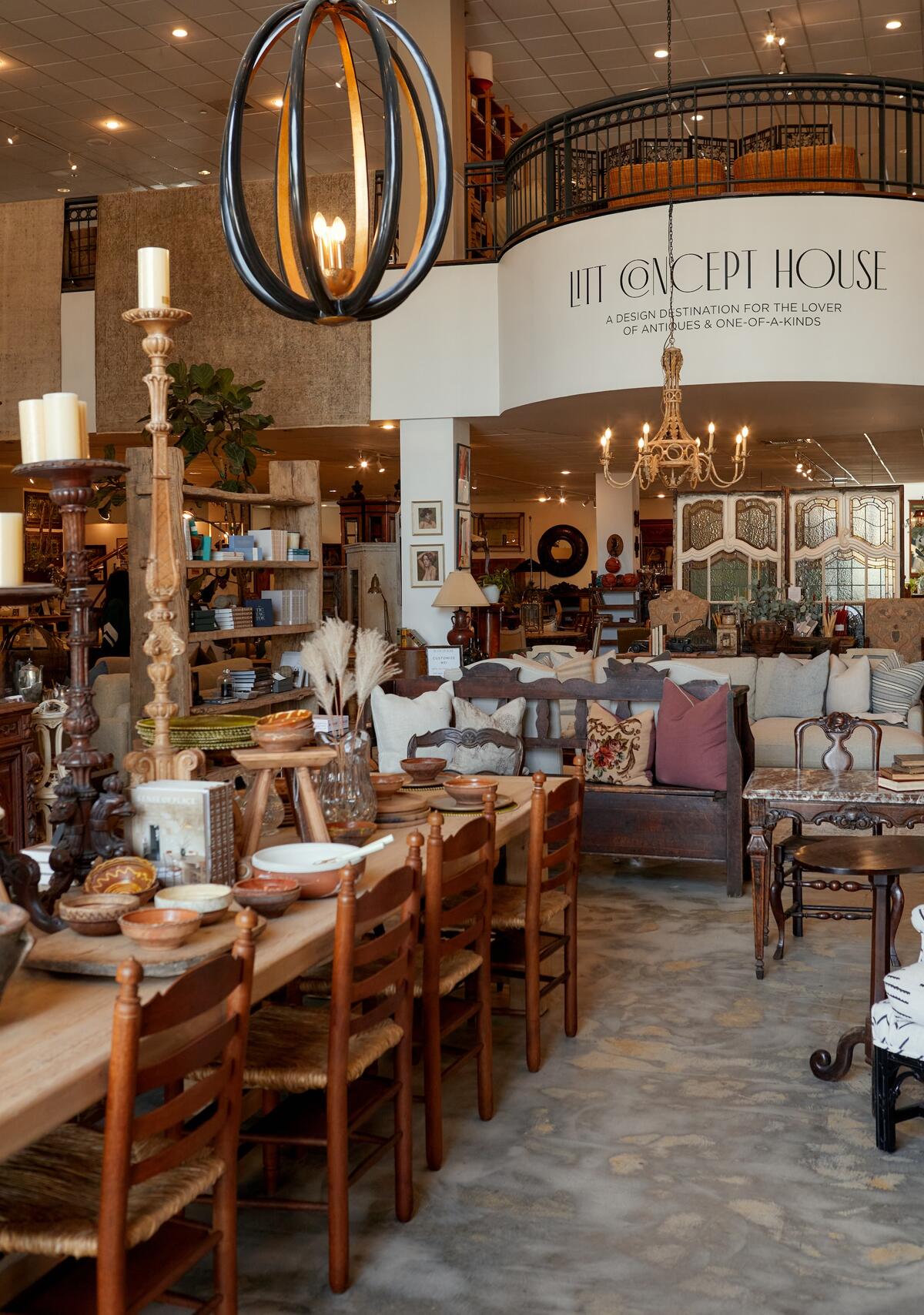
Are these sourcing trips fun? That’s what I always wonder.
Yes, yes! I make them fun. A lot of the trips are two to four days, quick in-and-outs. We fly in, we go to eight to 10 places, and we’re back on a plane. Those are not really fun. I still love shopping, but they’re really quick. At least once a year, we bring our family. We have two boys, who are almost teenagers, and we’ll add a few days or a week [to the trip] in the spring. We planned 12 days in England [most recently], and got our buying done in the first two. The trip is then leisure and research. We found a place in Manchester where we could have tables redone with reclaimed wood—beautiful stuff. So that was great. We have a workshop there now. We have workshops in Los Angeles, in Mexico, and a couple through France and other parts of Europe.
A tricky thing about buying is you can set out on a trip and say, “OK, I need more dining tables,” and you will not find them but you’ll find really great cabinets. I’ll come back and be like, “Oh gosh, we have so many holes.” We’ll go to auctions and seek out those pieces. Sometimes we can’t find consoles and it becomes a hole in our inventory.
A crazy thing about sourcing is that we essentially invest all of our cash into a container. Everything’s paid for in April, it doesn’t arrive until July, and then once it hits the floor it takes a week to get cleaned, tagged, priced, photographed. And then you hope a sale comes through. It’s an insane amount of financing. You’re holding the merchandise for a long time. The process is not for the faint of heart, I would say.
What’s your favorite category?
I focus a lot on smalls. I love bringing in the details—pottery, ceramics, small tables, candlesticks, all of that stuff. I love sourcing that. One of my favorite places is Saint-Rémy in France. Oh, and I am obsessed with sourcing upholstery. I am really into vintage fabrics. I have a bunch of shops and flea markets in the South of France where I can come out with boxes of vintage fabric, [which we use to] make cushions, poufs, ottomans, pillows. That is my jam.
What’s the relationship like with the trade?
I think we are 60-40 right now—60 percent [being] customers off the street. We source for our designers a lot of times. It’s obviously an important relationship. They come in, grab 10 or 20 pieces, and then say, “I’m looking for X.” They’ll send me photos of their inspo, and when I’m in the field in Europe, I absolutely source for them. And it’s a value: If you need something, we can put it in our container.
You and your husband made changes when you came in, but have you had to pivot from those pivots? There were different kinds of industry problems in 2021 than the financial headwinds we’re seeing today.
So far, we are sticking with antiques. Another reason we’re sticking with one-of-a-kinds is we didn’t want our customers shopping around, like, “I can get it here for $9.99.” We don’t want to be in that business. We do not [run] sales. We offer a trade discount, but we are not in the discount world. That is a conscious decision we have not pivoted from. Adding quick-ship was a bit of a pivot. We’ve been playing around with advertising. We’re always trying to figure out how to reach new people.
We have now let in very specific newly manufactured brands because of the fires, and because our clients were asking for it: “Can we do this with you? Can we get more from you?” In January, we went to our brands and started buying for people at cost for the whole month of February. I live right next to the Palisades; my son’s school burnt down.
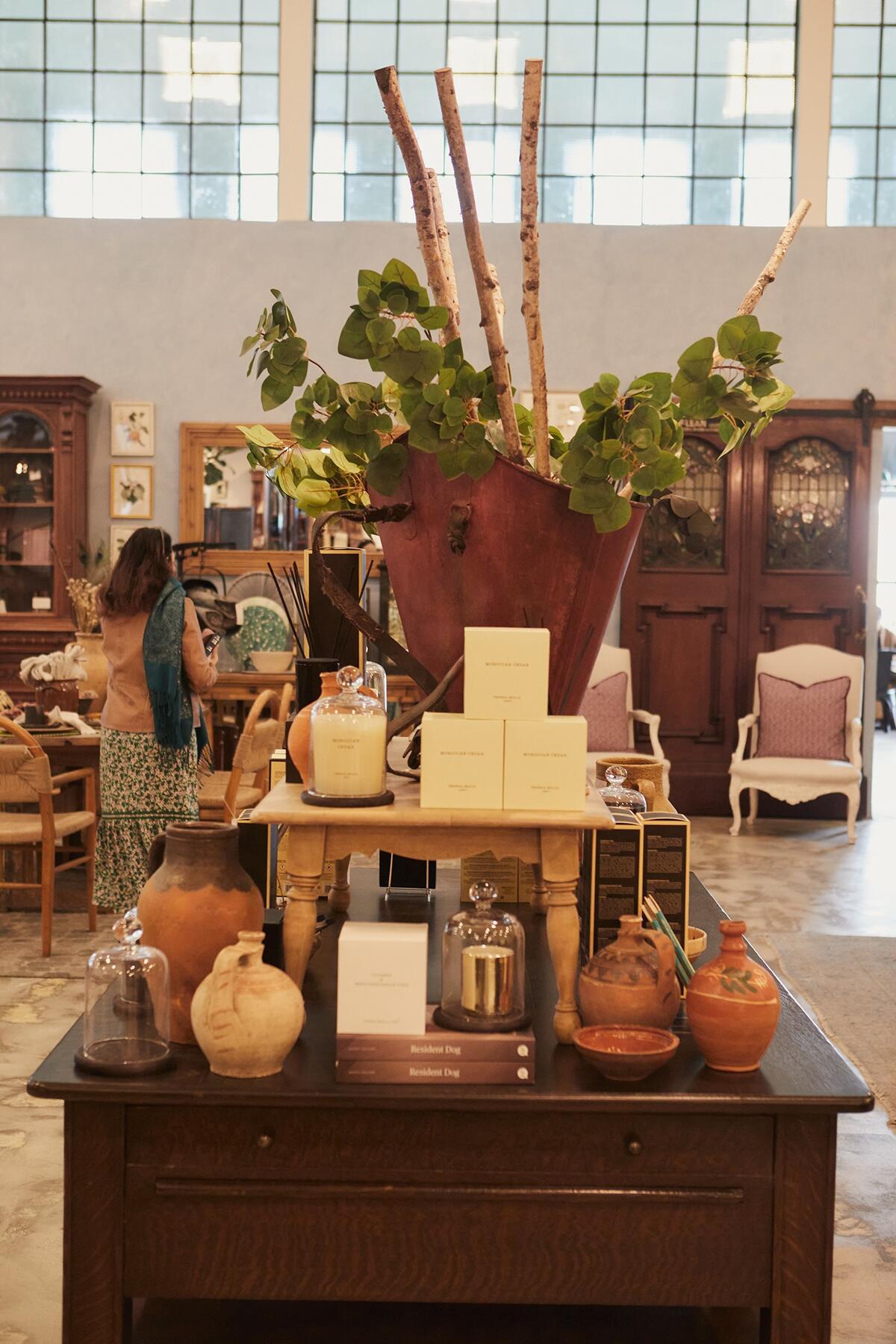
You had been around retail a long time, but were there aspects of the business that surprised you or had a steep learning curve?
I don’t know the digital ad world. And I fell quickly into a great content team. I knew I could create great content and figure that part out, but it was not necessarily easy. It’s a lot of work, constantly telling our story and making sure people understand what we’re doing: How do you get your brand to the right people today? Where we’ve landed right now is paid media on social. That’s working. And we are selling nationally online.
Shipping was a nightmare at the beginning. We jumped into having a website, and we had to absorb a lot of the shipping costs because a client doesn’t want to see a $1,400 delivery fee on a dining room table. There’s an issue with the mentality of that, [even though] if they see the table’s another thousand dollars, they’ll probably be OK with it [as opposed to a shipping-specific line item]. My husband and our sales manager have created a network of delivery people. But that was a big challenge—now that we’re live and national, what are we shipping, and how are we doing it efficiently? We’re working on a lower price point, so accessories under $500 and constantly having those in our inventory. Those are entry points to bring customers in.
You said over email that you’ve noticed an uptick in desire for antiques. Tell me more about that.
I think people are sick and tired of buying things that they throw away. There’s a lean toward forever furniture, quality, craftsmanship. The details, the handwork, all of that. There’s also a resurgence in younger people. Adding the coffee shop brought in foot traffic, and it brought in the right foot traffic. Really hip 20- and 30-somethings walk in and spend 45 minutes here and love it, whether they can afford a candle or aspire to buy the ottoman. It’s cool to see a younger generation appreciating antiques. I don’t think that’s going away any time soon, … especially depending on where tariffs land. Right now we’re looking at another 10 percent on the container we’re getting from England in July. If it was coming from France, it was going to be 20 or 30 percent. That will be a premium we have to pass on to the customers. But we have room. Our ears are always open to what we need to do to keep the business going. I’d like to get another anchor tenant in that has a lot of marketing power and has a similar ethos. It’s a collaborative experiential retail tactic.
What are your other hopes for the future? What are your dreams for the business?
I’m focused on the 10-year plan right now. We have such an opportunity to keep building community in our store. We have a jazz night or jazz day every other Sunday. Creating more community within retail, more collaboration pop-ups, more brands coming in—that takes a lot of my energy and my time. More buying trips, more of what we’re doing. Sadly, we’ll have another huge opportunity in the next two years rebuilding in the Palisades and Pasadena area. I was on Montana Avenue in Santa Monica last night, and in one of the oldest antique stores, the owner is retiring. I don’t think it’s a bad thing that there aren’t a lot of us left. Like I said, with more design tenants in our space to bring in consistent revenue for us, … collaborative retail is the thing for us.
What are your favorite days as a shop owner?
Not content days, where I have to talk. I never thought in my 40s that I’d be a content person, that I’d have to be in front of the camera. What I do love are the days when the containers drop. It’s like Christmas. Oh my God, what did I buy? I get to unwrap it all. That is so fun. Our clients come in and are walking around, excited and obsessed. And install days are very fun. While I’m not an interior designer and I don’t necessarily want to be hired by clients, I do [some] projects. When we pull things for a client’s living room and they send me text messages about how they’re so happy—those are my favorite.



